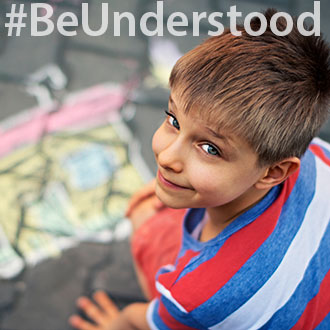The specific signs of dyslexia, both weaknesses and strengths, in any one individual will vary according to the age and educational level of that person. The five-year-old who can’t quite learn his letters becomes the six-year-old who can’t match sounds to letters and the fourteen-year-old who dreads reading out loud and the twenty-four-year-old who reads excruciatingly slowly. The threads persist throughout a person’s life.
The following are some clues to dyslexia for children in second grade and beyond.
Problems in speaking
- Mispronunciation of long, unfamiliar, or complicated words; the fracturing of words – leaving out parts of words or confusing the order of the parts of words; for example, aluminum becomes amulium
- Speech that is not fluent – pausing or hesitating often when speaking, lots of um’s during speech, no glibness
- The use of imprecise language, such as vague references to stuff or things instead of the proper name of an object
- Not being able to find the exact word, such as confusing words that sound alike: saying tornado instead of volcano, substituting lotion for ocean, or humanity for humidity
- The need for time to summon an oral response or the inability to come up with a verbal response quickly when questioned
- Difficulty in remembering isolated pieces of verbal information (rote memory) – trouble remembering dates, names, telephone numbers, random lists
Problems in reading
- Very slow progress in acquiring reading skills
- The lack of a strategy to read new words
- Trouble reading unknown (new, unfamiliar) words that must be sounded out; making wild stabs or guesses at reading a word; failure to systematically sound out words
- The inability to read small “function” words such as that, an, in
- Stumbling on reading multisyllable words, or the failure to come close to sounding out the full word
- Omitting parts of words when reading; the failure to decode parts within a word, as if someone had chewed a hole in the middle of the word, such as conible for convertible
- A terrific fear of reading out loud; the avoidance of oral reading
- Oral reading filled with substitutions, omissions, and mispronunciations
- Oral reading that is choppy and labored, not smooth or fluent
- Oral reading that lacks inflections and sounds like the reading of a foreign language
- A reliance on context to discern the meaning of what is read
- A better ability to understand words in context than to read isolated single words
- Disproportionately poor performance on multiple choice tests
- The inability to finish tests on time
- The substitution of words with the same meaning for words in the text he can’t pronounce, such as car for automobile
- Disastrous spelling, with words not resembling true spelling; some spellings may be missed by spell check
- Trouble reading mathematics word problems
- Reading that is very slow and tiring
- Homework that never seems to end, or with parents often recruited as readers
- Messy handwriting despite what may be an excellent facility at word processing – nimble fingers
- Extreme difficulty learning a foreign language
- A lack of enjoyment in reading, and the avoidance of reading books or even a sentence
- The avoidance of reading for pleasure, which seems too exhausting
- Reading whose accuracy improves over time, though it continues to lack fluency and is laborious
- Lowered self-esteem, with pain that is not always visible to others
- A history of reading, spelling, and foreign language problems in family members
Strengths
In addition to looking for signs of a phonologic weakness, here are some signs of strength to look for and applaud in your child:
- Excellent thinking skills: conceptualization, reasoning, imagination, abstraction
- Learning that is accomplished best through meaning rather than rote memorization
- Ability to get the “big picture”
- A high level of understanding of what is read to him
- The ability to read and to understand at a high level over learned (that is, highly practiced) words in a special area of interest; for example, if his hobby is restoring cars, he may be able to read auto mechanics magazines
- Improvement as an area of interest becomes more specialized and focused, when he develops a miniature vocabulary that he can read
- A surprisingly sophisticated listening vocabulary
- Excellence in areas not dependant on reading, such as math, computers, and visual arts, or excellence in more conceptual (versus factoid-driven) subjects such as philosophy, biology, social studies, neuroscience, and creative writing
Many of the above indicate strengths in higher-level thinking processes.
Excerpted and adapted from: Overcoming Dyslexia: A New and Complete Science-Based Program for Reading Problems at Any Level

